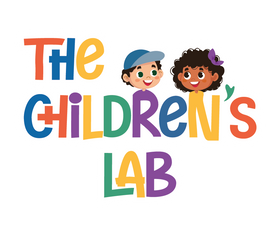
When Should You Start Using Brain Development Toys for Babies?
When Should You Start Using Brain Development Toys for Babies?
Every parent dreams of giving their child the best possible start in life. From nutrition and health to early education and play, the decisions we make during the first few years play a major role in shaping a child’s growth. One question parents often ask is: When should I start using brain development toys for my baby?
The short answer is: you can start earlier than you think. Babies begin learning from the moment they are born, and the right toys can help them explore their senses, strengthen their motor skills, and gradually develop cognitive abilities.
In this blog, we’ll explore:
-
Why brain development toys matter
-
The right age to introduce them
-
Examples of effective toys by stage
-
FAQs parents often ask
Why Brain Development Toys Are Important for Babies
Babies’ brains grow at a rapid pace. During the first three years of life, the brain forms more than a million neural connections every second. This is a critical window where stimulation plays a key role.
Brain development toys help to:
-
Stimulate curiosity through colors, sounds, and textures
-
Improve motor skills by encouraging reaching, grasping, and movement
-
Enhance sensory learning through touch, sight, and sound
-
Lay the foundation for problem-solving and memory skills
-
Promote bonding when parents play along, strengthening emotional development
These toys don’t just entertain babies—they actively shape how they think, react, and learn.
Read more: What Are the Most Popular Educational Toys for Kids Right Now?
When Should You Start Using Brain Development Toys?
Many parents wonder if it’s too early to introduce educational play. The truth is, playtime is learning time right from birth. Here’s a breakdown by age group:
0–6 Months: Early Sensory Play
-
Babies are fascinated by colors, textures, and sounds.
-
Great options: rattles, soft plush toys, and black-and-white cards.
-
Play gyms with hanging toys encourage reaching and coordination.
6–12 Months: Exploration and Movement
-
As babies start sitting, crawling, and standing, toys that support movement are essential.
-
Great options: stacking rings, soft blocks, and textured balls.
12–24 Months: Problem-Solving Stage
-
Toddlers begin to understand cause-and-effect, memory, and imitation.
-
Great options: shape sorters, push-and-pull toys, and musical instruments.
2–3 Years: Imaginative Play
-
Pretend play becomes common.
-
Great options: kitchen sets, simple puzzles, and building blocks.
Read More: Sensory Activities for Toddlers at Home | Fun Indoor Activities
Best Brain Development Toys by Age
-
0–6 months: Soft rattles, black-and-white picture cards, sensory cloths
-
6–12 months: Stacking cups, textured balls, activity cubes
-
12–24 months: Shape sorters, toddler musical instruments, push walkers
-
2–3 years: Play-dough kits, puzzles, role-play toys
How Brain Development Toys Support Growth
1. Cognitive Development
Problem-solving toys like puzzles help children think critically. Cause-and-effect toys build logical thinking.
2. Language Development
Sound-making toys and storytelling activities help babies associate words with objects.
3. Motor Skills
Stacking blocks and play-dough strengthen fine motor skills. Push-and-pull toys support walking and balance.
4. Social and Emotional Growth
Role-play toys build empathy, creativity, and social awareness.
FAQs on Brain Development Toys for Babies
1. When should I introduce brain development toys to my baby?
As early as birth. Start with sensory toys like rattles, soft toys, and visual cards.
2. What are the best brain development toys for a 1-year-old?
Shape sorters, stacking cups, push walkers, and musical toys.
3. Which toys help with brain development in 2-year-olds?
Play-dough kits, building blocks, and pretend-play sets.
4. What toys support brain development in 3-year-olds?
Puzzles, role-play toys, and beginner STEM kits.
5. How do brain development toys actually help toddlers?
They engage senses, build motor coordination, encourage curiosity, and foster focus.
Practical Tips for Parents
-
Follow your baby’s cues: Every child learns differently.
-
Rotate toys: Keeps playtime exciting and fresh.
-
Encourage interaction: Play together for maximum impact.
-
Choose safe toys: Always go for non-toxic, BPA-free, and age-appropriate options.
Are Brain Development Toys Worth It?
Some parents worry these toys are just marketing. The truth is, children don’t need expensive gadgets—simple, development-focused toys work best. Blocks, rattles, and sensory play-dough are powerful tools when used consistently.
Educational play is about making everyday experiences meaningful. Whether stacking, sorting, or role-playing, these toys ensure your baby is not just entertained but actively learning.
Final Thoughts
So, when should you start using brain development toys for babies? The answer is: right from the beginning.
From sensory rattles for newborns to puzzles and pretend-play kits for toddlers, brain development toys grow with your child. They make playtime fun, engaging, and purposeful—laying the foundation for lifelong learning.

